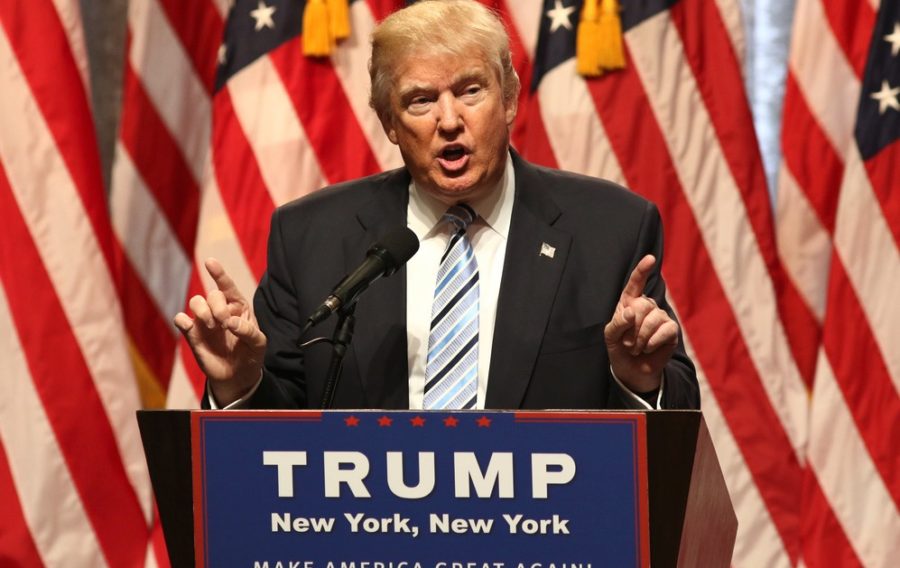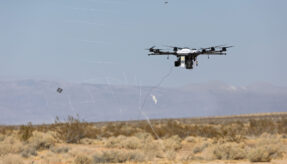
The dust is now beginning to settle following Donald Trump’s election victory to become the 45th president of the United States of America. Attention is now turning towards what life will be like once the President-elect is sworn on Friday, January 20, 2017.
What his tenure as President might mean for the Defence industry could perhaps be summed up by a look at the stock market following his victory.
Throughout his campaign, Mr Trump has signalled a desire to maintain a strong military and this was reflected as Defence industry stocks such as those of BAE Systems and Lockheed Martin soared as his win was confirmed.
The US government is currently spending over $600Bn per year, making it the world’s biggest spender on Defence – four times that of China and ten times more than Russia – but under Obama’s presidency, spending has dropped significantly.
In 2010, national security spending consisted of 20.1% of the federal budget, but in 2015 it was just under 16%. Over those five years, spending fell from 4.6% of gross domestic product to 3.3%.
The issue of sequestration, which is part of the Budget Control Act of 2011 that mandates $1.2 trillion in cuts across federal agencies to include $500 million to the military over the next decade, has hit the Defence industry hard.
On the campaign trail, Trump said he would request Congress reverse cuts made to the defence budget that came into force following the 2013 budget sequester after Congress failed to reach a new budget agreement.
Trump commented: “History shows that when America is not prepared is when the danger is greatest. We want to deter, avoid and prevent conflict through our unquestioned military dominance.”
He didn’t divulge a figure on what this increase would amount to but should it only match pre-sequestration levels, it would be worth around £500Bn over a ten year period.
The increase in funding would be offset by reducing what the President-elect called “government waste and budget gimmicks”.
It would appear that much of the investment would be made in the parts of the military more commonly associated with traditional warfare rather than in tackling terrorism.
Undoubtedly, his campaign was built on the US having a strong military but Trump also raised concerns over the need for US involvement in some overseas military engagements and the amount being paid to some defence contractors.
The business mogul has also talked on the need to strengthen the military but at a reduced cost. Speaking in October 2015, Trump said: “I’m gonna build a military that’s gonna be much stronger than it is right now. It’s gonna be so strong, nobody’s gonna mess with us. But you know what? We can do it for a lot less.”
The overall rhetoric coming from Trump has been warmly received from those within the Defence industry but as would seem the case with much of what the President-elect said, it remains to be seen whether this will translate to actual policy.
In a statement, Boeing congratulated the Trump team on their victory and envisaged a strong relationship with his administration: “We congratulate President-elect Trump and newly elected members of Congress and look forward to working with them to ensure that U.S. companies can compete, win and grow our economy to provide good jobs to U.S. workers; as well as preserve American leadership in national security.”
Trump has stated on numerous occasions his plans to modernise the USA’s ageing nuclear arsenal, which is made up of missile-carrying submarines, land-based missiles in Midwestern silos, and long-range bombers – all of which will be good news for the Defence industry.
Another sector of the industry to benefit would be shipbuilding. So far, Mr Trump has called for an increase in the maritime fleet to 350 surface ships and submarines, up today’s number of 276 and above the Pentagon’s current target of 308 ships over the next 10 years.
We can also expect a rise in the number of aircraft. The President-elect has indicated that the number of fighters would increase to at least 1,200 from the current level of 1,113. He has also made known his worries about the age of the current Air Force fleet, with an average age of 27 years.
A major bone of contention on the horizon could be the controversial F-35 Joint Strike Fighter programme, which is sure to be of some concern for project partners Lockheed Martin, BAE Systems and Northrop.
Already massively over budget and behind schedule, the performance of what has been billed at the most advanced aircraft in the US military was slated in a leaked document last year.
The report, which was supposed to be for the eyes of Lockheed Martin and Defence Officials stated the aircraft couldn’t out perform existing aircraft.
Mr Trump commented: “I’m hearing that our existing planes are better. And one of the pilots came out of the plane, one of the test pilots, and said this isn’t as good as what we already have.
“Test pilots are amazing people. They know better than anybody. They’re saying it doesn’t perform as well as our existing equipment, which is much less expensive. So when I hear that, immediately I say we have to do something, because you know, they’re spending billions. This is a plane. There’s never been anything like it in terms of cost.”
Troop numbers will also increase under Trump’s presidency, rising from current number of around 490,000 to 540,000 active duty troops.
The Marine Corps would also be expanded, rising from 23 battalions to 36, equivalent to around 10,000 more Marines.
The fact that defence industry stocks rose following his victory would suggest that many believe Trump will be ultimately good news for the defence industry.
Impact on Europe
As significant as his administration’s Defence spending will be how Mr Trump positions the United States in terms of foreign policy and it commitment to treaties such as NATO.
Again, Trump gave contradictory sound bites over his feelings towards NATO during the campaign trial.
In the summer he sent shockwaves across the world when he questioned whether The US should come to aid of NATO member states if they are not fulfilling their financial obligations.
Only five of NATO’s 28 nations spend more than the alliance’s recommended level of 2% of GDP on defence, while the US contributes almost 70% of NATO’s combined annual defence spending.
Mr Trump said: “You can’t forget the bills. They have an obligation to make payments. Many NATO nations are not making payments, are not making what they’re supposed to make. That’s a big thing. You can’t say forget that.”
In late September during the presidential debates, he appeared to backtrack from these comments: “I’m all for NATO but I said they have to focus on terror, also. And they’re going to do that. And that was, believe me, not going to get credit for it, but that was largely because of what I was saying and my criticism of NATO.”
Trump’s shifting positions on NATO has caused enough alarm in Europe for the EU to raise its military research budget for the first time in six years and increase defence cooperation amongst its members.
Last month, EU governments agreed to increase the 2017 funding of the European Defence Agency by 1.6%, in line with inflation. The rise will see the budget rise from €30.5M to €31M.
This week saw NATO and the UE agree a seven-point plan to tackle the threat of cyber terrorism, information warfare and irregular militia.
The agreement, although not legally blinding, allows the six EU states outside NATO to benefit from U.S. military support.
In a news conference with EU Foreign Policy Minister, Federica Mogherini, NATO Secretary-General Jens Stoltenberg said: “We are strengthening the transatlantic bond and the vital link between North America and Europe.”
The Trump effect clearly played a key role in bringing the EU and NATO closer together – although this was achieved through threatening to renege on treaty commitments rather than through any masterly statesmanship and diplomacy. If his remarks were designed to make Europe less reliant on American help, then his words are already having an impact.
This new found spirit of cooperation was, at any rate, welcomed by the German Foreign Minister, Frank-Walter Steinmeier, who said: “With a changing security environment, it’s a good thing for NATO and the European Union to combine efforts.”
Although, we can but speculate on what the Trump administration will bring, it seems unlikely that he would be the Commander and Chief who let the United States walk away from its NATO responsibilities.
Outgoing US Secretary of State John Kerry tried to allay fears over US policy towards NATO at his final NATO foreign minister’s summit. He commented: “The US commitment to NATO transcends politics. I am confident that the majority of both major parties are committed to NATO.”
image (c) JStone / Shutterstock.com
If you would like to join our community and read more articles like this then please click here
BAE Systems European Defence Agency European Union F-35 Joint Strike Fighter Lockheed Martin NATO Northrop Trump







